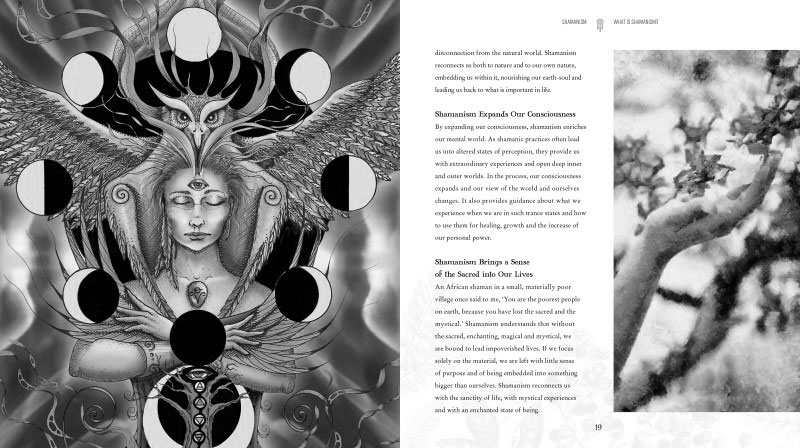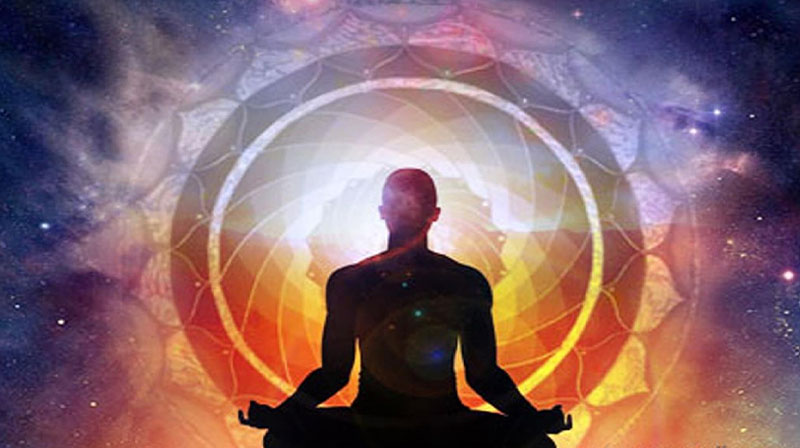Inward & Outward – Meeting between Tantra & Shamanism
There are a lot of similarities between tantra and shamanism as in both there is an exploration of alternate states of consciousness. We can also consider that they deal with forces of nature, “Shakti-s” in order to achieve a greater understanding of what existence really is by opening the consciousness to embrace secrets of life.
My way took me through a shamanic exploration while I was dealing with existential problems such as death of close friends or the meaning of life and I couldn’t found any answer in our occidental society, detached from any mystical or metaphysic approach. A friend of mine who study ethno botanical uses of Amazonian plants said me that our world is too detached from rites, initiations and circles support, as they exist(ed) in many traditional societies, and I agree with that, for that we don’t have a lot of guidance through teen years (and further on) regarding real topics as sex, death, aging, sickness or values. Both tantra and shamanism have an emphasis on that.

What is in the Shadows?
Ayahuasca ceremonies allowed me to go deep inside to face all hidden facets of personality that one usually deny, meeting the “shadow” as Jung calls it permitted me to embrace the whole life as one, understanding that opening up to all parts of duality leads to acceptation and harmony. In that sense, Tantra is the same approach to me as we have to understand it all, use it all (emotions, sex, food, the good and the bad) to achieve the alchemy of life. Shamanism induce states of consciousness by using entheogens (and my Yoga guru advised me to use it sparingly, for that it is a shortcut), sweat lodges, fire ceremonies or sound in order to induce a trance state (detached from the mind and fully merged into the instant living) which lead to parallel realities or to an intense experience of life…and so does tantra with rituals, Yoga, meditation or trataka.

Shamanism, as tantra, use a lot of rituals because our subconscious mind understand rituals, symbols, chants or mantras, prayers and they can be used as tools to get the mind to enlarge its vision and to reach superior realities. We can find in both path the presence of the elements as it’s the basis of prakriti, of mother nature (and of our own beings) and life come from those tattvas or energies, therefore fire ceremonies, offerings and devotion to the forces of nature are used both in tantra and shamanism for they are a way to connect with life. Tantra sees life as the manifestation of the divine consciousness and this point of view is the same in shamanic cultures, all energies, all the living forces are sacred.
Tantra and shamanism are both a way of introspection and a way of ecstasy, I mean they teach us the way to dig inside ourselves, to discover and deepen the exploration of our internal world and at the same time we learn to blossom to the world, to embrace it all accepting to be part of it.
But there is a fundamental difference between those two and it’s the connection with the Divine, cause while it’s THE point for the tantra practice, in shamanism the work will be focused on the forces of natures. Tantra is a path to Shiva, to reach the divine consciousness and all efforts will tend to that goal, even working with shaktis while in shamanism, the goal isn’t that clear and as the power of Intention is one of the main forces of the Universe, one should remember to consecrate all efforts to spiritualize the matter.
Working with both of these beautiful tools will tune our manifestation to the superior consciousness, leading us to deepen and transcend our vision of daily life. Tantra and shamanism will help to understand both inside and outside ourselves so that we can fully merge into energies, frequencies and meaning of life, which will gain height and depth.
This is a guest post by Miya Diaz from Kama Tantric Massage, Sydney.
Miya is a tantric yogi, deeply connected to mysticism and shamanism.
What kind of thoughts you have about tantra and shamanism? Do you see the similarities, do you see the differences?


